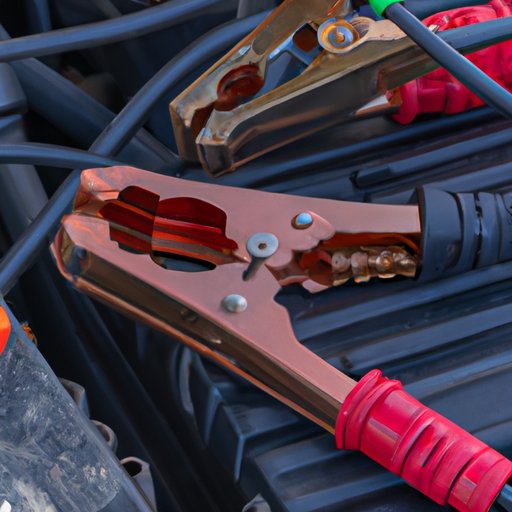Introduction
Getting stranded with a dead battery is a frustrating experience that everyone wants to avoid. If you find yourself in this situation, jumper cables can be your savior. In this article, we will explain the importance of jumper cables, when you might need to use them, and guide you through the process of jump-starting your car safely.
Tools and Equipment for Safe Use
Before you jump-start your car, it is important to gather the appropriate equipment and tools to ensure the process is done safely. Here are some of the things you will need:
Jumper cables
Make sure to have a set of heavy-duty jumper cables that are long enough to reach between the two car batteries. The cables should be free of any damage or wear and tear that could cause an electrical shock or failure.
Reliable car battery
The battery of the car providing the jump-start should be in good shape and charged enough to handle the extra load of jump-starting another car. It is best to use a newer car battery which has enough juice to start both cars.
Well-ventilated area
Ensure that you are parked in a safe, well-ventilated area before attempting to use jumper cables. This will provide a safer environment, keeping you and the cars around you safe.
Steps to Properly Connect the Cables
Once you have gathered the necessary equipment, it is essential to know the correct order of connecting the cables to each battery. Follow these steps:
1. Position the Cars
Park the working car next to the car with the dead battery, ensuring that the cars are close enough for the cables to reach each battery but not touching. Turn off the engine of both cars.
2. Connect the Red (+) Cable
Attach one end of the red (+) jumper cable to the positive terminal of the dead battery and the other end to the positive terminal of the working car battery.
3. Connect the Black (-) Cable
Attach one end of the black (-) jumper cable to the negative terminal of the working car battery and the other end to an unpainted metal part of the car with the dead battery, such as a bolt or the engine block.
4. Let the Car Battery Charge
Start the working car and allow it to idle for a few minutes to allow the battery to charge the dead battery.
5. Start the Car with Dead Battery
Attempt to start the car with the dead battery. If it doesn’t turn over, check the connections and wait for another minute before attempting again.
6. Disconnect the Cables
Once the dead car starts, disconnect the black (-) cable from the unpainted metal of the car with the dead battery first, followed by the negative terminal of the working car battery, the positive terminal of the working car battery, and finally the positive terminal from the dead battery.
Tips for Safe Connection and Jump-Starting the Car
Here are a few tips to keep in mind while using jumper cables:
1. Safety First
When working with electrical components, safety should always be the priority. Avoid touching the metal clamps to prevent electrical shocks.
2. Correct Order is Essential
Make sure to connect the jumper cables in the correct order which is positive to positive and negative to an unpainted metal surface of the car’s frame. Incorrect order can damage the car’s battery.
3. Watch for Sparks
Even when done right, jumping a dead battery can create sparks. Always be mindful while connecting cables and keep a fire extinguisher nearby.
4. Troubleshooting Common Issues
Some common problems you may face are corroded battery terminals, loose connections, or a faulty alternator. In such cases, it is best to consult a professional mechanic to avoid further damage to the car’s battery.
Preventing Future Issues
Jump-starting your car should be the last resort. Here are some tips for proper maintenance to prevent future issues:
1. Keep Your Battery Clean
Ensure that your battery terminals are clean and free of rust or corrosion. Clean them with a battery terminal cleaner and brush to ensure optimal performance.
2. Drive Frequently
Even if you have a newer car battery, it still requires regular use. Try to drive your car daily or weekly to keep it charged and prevent the battery from losing power.
3. Turn off Electronics
By turning off the car’s electronics when not in use will help elongate battery life and extend its charge.
Conclusion
Jumper cables can save the day if your car has a flat battery. Taking the necessary precautions and following the correct steps can protect your car’s electrical system, ensuring that it remains functioning for many more drives to come. Remember always to prioritize safety when working with jumper cables.
